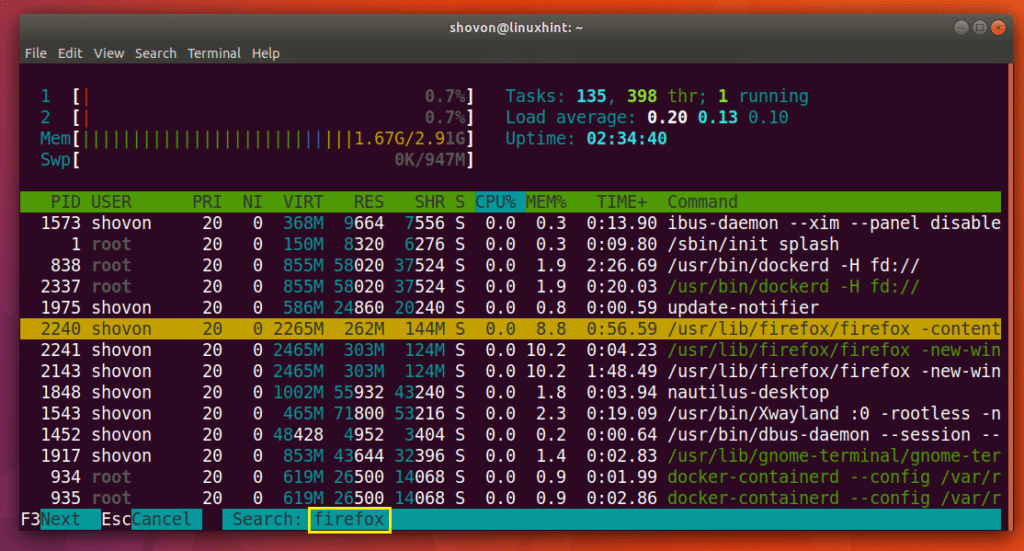

Untag all processes (remove all tags added with the Space key).

Commands that can operate on multiple processes, like "kill", will then apply over the list of tagged processes, instead of the The following commands are supported while in htop:Īrrows, PgUP, PgDn, Home, End Scroll the process list. v -version Output version information and exit s -sort-key COLUMN Sort by this column (use -sort-key help for a column list) Start working thread for pagemap memory stats u -user=USERNAME Show only the processes of a given user C -no-color -no-colour Start htop in monochrome mode d -delay=DELAY Delay between updates, in tenths of seconds

New blind navigation: F2, right, delete, right, delete.Mandatory arguments to long options are madatory for short options too. (If CPUs are the items in the header.) After this you can see what is going on and would continue by pressing F10 to quit the configuration. Left_meters=Memory Swap CPU Load LoadAverage # The parser is also very primitive, and not human-friendly. Sample configuration: # Beware! This file is rewritten by htop when settings are changed in the interface. Each line in the header shows four CPUs which is fine for me. Up about half the screen and the other half lists the processes. In my case (120 cores) a configuration with "CPUs (1&2/4)" on the left side of the header, and "CPUs (3&4/4)" on the right side of the header looks good. copy ~/.config/htop/htoprc to the larger machine.From the right most column select "CPU Average" and press F5 to insert it instead.Move down to select "CPU" and press F9 to delete it.Press F2 to get into the configuration.On a machine where you can see past the header:.The configuration is saved (under Debian) under ~/.config/htop/htoprc. Based on grawity's answer, you can create a configuration that you like on a different machine and then copy it to the machine where the problem occurs.


 0 kommentar(er)
0 kommentar(er)
